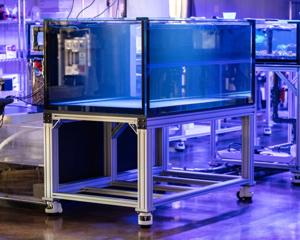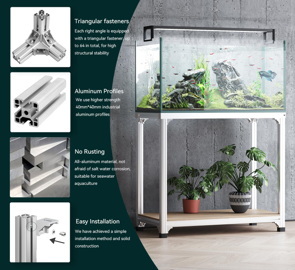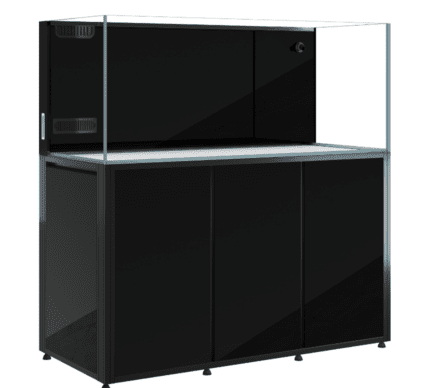Content Menu
● Understanding Aluminum Extrusion
● Advantages of Aluminum Extrusion Aquarium Stands
● Designing an Aluminum Extrusion Stand for Saltwater Aquariums
● Installation Tips
● Maintenance of Aluminum Extrusion Stands
● Additional Considerations for Saltwater Aquariums
>> 1. Weight Distribution
>> 2. Moisture Control
>> 3. Lighting Considerations
>> 4. Access for Maintenance
● Real-Life Applications
● Cost Considerations
>> 1. Initial Investment vs Long-Term Value
>> 2. Customization Costs
● Environmental Impact
● Conclusion
● FAQ
>> 1. Are aluminum extrusion aquarium stands suitable for all types of aquariums?
>> 2. How much weight can an aluminum extrusion stand support?
>> 3. Can I customize my aluminum extrusion aquarium stand?
>> 4. Do I need special tools to assemble an aluminum extrusion stand?
>> 5. How do I maintain my aluminum extrusion aquarium stand?
Aquarium enthusiasts are increasingly turning to aluminum extrusion aquarium stands as a preferred choice for supporting both freshwater and saltwater aquariums. This article delves into the benefits, features, and considerations of using aluminum extrusion stands specifically for saltwater setups, providing insights into their strength, durability, and aesthetic appeal.

Understanding Aluminum Extrusion
Aluminum extrusion involves shaping aluminum alloy into a desired cross-sectional profile. This process allows for the creation of lightweight yet strong structures, making it an ideal material for aquarium stands. The unique properties of aluminum, such as corrosion resistance and modularity, enhance its suitability for aquatic environments.
Advantages of Aluminum Extrusion Aquarium Stands
1. Corrosion Resistance
One of the primary concerns for aquarium stands is their exposure to moisture and salt. Aluminum does not rust like steel; instead, it forms a protective oxide layer that prevents corrosion. This characteristic is particularly beneficial for saltwater aquariums, where salt can accelerate deterioration in other materials.
2. Strength and Stability
Aluminum extrusion stands are engineered to support significant weight. The structural integrity of these stands is often tested through rigorous analysis to ensure they can handle the weight of large tanks filled with water, substrate, and decorations. For instance, a properly designed aluminum stand can support tanks that weigh hundreds of pounds when filled.
3. Lightweight and Easy to Assemble
Compared to traditional wood or steel stands, aluminum is considerably lighter, making it easier to transport and assemble. Many manufacturers offer modular designs that can be easily adjusted or expanded as needed.
4. Aesthetic Appeal
Aluminum extrusion stands provide a sleek and modern appearance that complements contemporary aquarium setups. Available in various finishes, including anodized options that enhance durability while maintaining visual appeal, these stands can fit seamlessly into any home or office decor.
5. Customization Options
Many companies offer customizable aluminum extrusion aquarium stands tailored to specific tank dimensions and user preferences. This flexibility allows aquarists to design stands that meet their unique needs without compromising on quality or aesthetics.
Designing an Aluminum Extrusion Stand for Saltwater Aquariums
When designing an aluminum extrusion aquarium stand for a saltwater setup, several factors must be considered:
- Tank Size and Weight: Calculate the total weight of the tank when filled with water, substrate, and decorations to ensure the stand can support it adequately.
- Dimensions: The stand should match the tank's footprint precisely to provide optimal stability.
- Leveling Feet: Consider incorporating adjustable leveling feet to accommodate uneven surfaces and ensure stability.
- Modular Design: Opt for a design that allows future modifications or expansions if you plan to upgrade your aquarium later.
Installation Tips
1. Prepare Your Space: Ensure the area where the stand will be placed is clean and level.
2. Follow Assembly Instructions: Most aluminum extrusion stands come with detailed assembly instructions; follow them carefully to avoid structural issues.
3. Use Proper Tools: While many aluminum stands require minimal tools for assembly, having basic tools on hand can facilitate a smoother setup process.
4. Check Stability: Once assembled, check the stability of the stand before placing the aquarium on it. Adjust leveling feet if necessary.
Maintenance of Aluminum Extrusion Stands
Maintaining an aluminum extrusion aquarium stand is straightforward:
- Regular Cleaning: Wipe down the stand regularly with a damp cloth to remove dust and salt residue.
- Inspect for Damage: Periodically check for any signs of wear or damage, especially around joints and connections.
- Avoid Harsh Chemicals: Use mild cleaning solutions to avoid damaging the anodized finish.

Additional Considerations for Saltwater Aquariums
Saltwater aquariums present unique challenges compared to freshwater setups. Here are some additional considerations when using aluminum extrusion stands:
1. Weight Distribution
When setting up a saltwater aquarium, it's crucial to consider how weight is distributed across the stand. Saltwater tanks often contain heavy substrates like sand or live rock, which can significantly increase overall weight. Ensure that your aluminum extrusion stand has a wide base and adequate support beams to distribute this weight evenly.
2. Moisture Control
Even though aluminum is resistant to corrosion, prolonged exposure to moisture can still lead to issues over time. Consider using waterproof mats or trays beneath your aquarium setup to catch any spills or leaks that may occur during maintenance.
3. Lighting Considerations
Many aquarists use high-intensity lighting systems over their saltwater tanks to promote coral growth and enhance visual appeal. Ensure that your aluminum extrusion stand can support any additional equipment such as LED lighting fixtures without compromising stability.
4. Access for Maintenance
Design your setup so that you have easy access to all areas of your aquarium for maintenance tasks such as cleaning glass surfaces or changing filters. An open design with ample space around the tank will make these tasks much easier.
Real-Life Applications
Many aquarists have successfully utilized aluminum extrusion aquarium stands in their setups:
- A marine biologist used an aluminum stand for her 150-gallon reef tank in her home office. The lightweight nature allowed her to easily move it during renovations without assistance.
- A commercial aquarist operating a public aquarium found that using modular aluminum extrusion stands enabled him to reconfigure his displays quickly as new exhibits were introduced.
These real-life applications highlight not only the practicality but also the versatility of aluminum extrusion stands in various settings.
Cost Considerations
When considering an aluminum extrusion aquarium stand, it's essential to evaluate costs in relation to benefits:
1. Initial Investment vs Long-Term Value
While aluminum extrusion stands may have a higher upfront cost compared to traditional wooden stands, their longevity and resistance to corrosion often make them a more economical choice in the long run. They require less maintenance and are less likely to need replacement due to wear or damage from moisture exposure.
2. Customization Costs
If you opt for a custom design tailored specifically for your aquarium dimensions and aesthetic preferences, be prepared for additional costs associated with customization. However, this investment can pay off by providing a perfect fit and enhancing your overall aquarium experience.
Environmental Impact
As sustainability becomes increasingly important in all industries, it's worth noting that aluminum is a highly recyclable material. When choosing an aluminum extrusion aquarium stand:
- Recyclability: At the end of its life cycle, an aluminum stand can be recycled without losing its properties.
- Sustainable Practices: Many manufacturers are adopting sustainable practices in their production processes, further minimizing environmental impact.
Conclusion
Aluminum extrusion aquarium stands are an excellent choice for supporting saltwater aquariums due to their corrosion resistance, strength, lightweight nature, aesthetic appeal, and customization options. They provide a reliable foundation for aquatic setups while enhancing the overall look of your aquarium environment.
As more aquarists recognize these advantages, aluminum extrusion stands are becoming increasingly popular in both home aquariums and commercial installations.

FAQ
1. Are aluminum extrusion aquarium stands suitable for all types of aquariums?
Yes, they are suitable for both freshwater and saltwater aquariums due to their corrosion resistance and strength.
2. How much weight can an aluminum extrusion stand support?
The weight capacity varies by design but many are engineered to support hundreds of pounds when properly constructed.
3. Can I customize my aluminum extrusion aquarium stand?
Absolutely! Many manufacturers offer customizable options tailored to your specific tank dimensions and aesthetic preferences.
4. Do I need special tools to assemble an aluminum extrusion stand?
Most designs require minimal tools; basic hand tools are usually sufficient for assembly.
5. How do I maintain my aluminum extrusion aquarium stand?
Regular cleaning with a damp cloth and periodic inspections for wear are recommended to maintain its appearance and functionality.






















